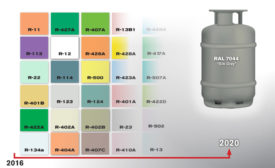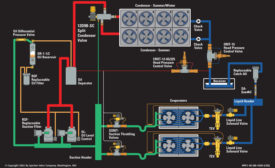Refrigeration
Company’s Refrigeration Battery solution intelligently optimizes cooling to reduce peak energy demand
Read More
US Commercial Refrigeration to Grow at 3.2% CAGR to 2025
There is growing demand for frozen and chilled products, expansion of cold chain capacity, technological advancements
October 24, 2016
Franklin Energy Expands Services for PowerStream
Will direct installation of energy efficient refrigeration equipment for qualifying customers
October 20, 2016
AHRI Applauds Agreement to Include HFCs in Montreal Protocol
Association said it has long supported including HFCs in a global phasedown plan
October 17, 2016
Cooltech Partners with Carrefour to Demo Magnetic Refrigeration
System uses a water coolant instead of a refrigerant gas to provide an eco-friendly refrigeration solution
October 12, 2016
Emerson Supports More Efficient Ice Machines with New Simulation Model
Patent filed on model that supports development of products that meet new U.S. energy regulations
October 11, 2016
HVAC Refrigerant Cylinders Are Over the Rainbow
All refrigerant canisters are expected to sport a uniform color by 2020
Read More
Commercial Refrigeration Market Worth $52.52 Billion by 2024
Food service segment had over 32 percent of the revenue share in 2015 and is projected to see significant growth
October 10, 2016
The Professor: Controlling Head Pressure with a Split Condenser
A reliable way to reduce the extra refrigerant charge needed for condenser flooding
Read More
Three Keys to Accelerating Adoption of Natural HVAC Refrigerants
A call for utility incentives, industry benchmarks, and uniform modeling solutions
Read More
Copyright ©2024. All Rights Reserved BNP Media.
Design, CMS, Hosting & Web Development :: ePublishing





